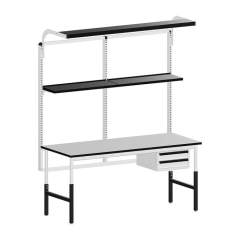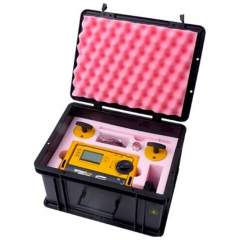High-Performance Soldering Stations by JBC
High-Performance Soldering Stations by JBC
Blog Article
Innovative Solutions with Bosch Rexroth's Cutting-Edge Technology
Soldering is at the heart of contemporary technology, joining the littlest components on sophisticated enterprise boards. As products decrease and their difficulty increases, the need for accuracy, performance, and trusted solutions in soldering has never been soldering station (lötstation) higher. This is where sophisticated soldering techniques and resources step in, transforming the landscape of technology assembly.

Sophisticated Soldering Methods
Soldering is just a strategy applied to participate two pieces of steel together by melting a filler product, called solder, between them. Typically, this is performed utilizing a heated metal and personally applying the molten solder.
But, with the raising demand for detail and performance in electronics assembly, new sophisticated ways of soldering have emerged. These techniques provide improved get a handle on, precision, and repeatability, making them necessary in contemporary technology manufacturing.
Area Install Technology (SMT)
Area install technology (SMT) involves attaching electric parts right onto the top of a printed enterprise board (PCB).
Shifting the Soldering Landscape
During the last decade, miniaturization in gadgets has increased by almost 65%, driving suppliers to adopt smarter approaches. Parts like microprocessors and multi-layer boards require identify reliability that traditional soldering only can't guarantee. This is exactly why skilled specialists are moving towards advanced temperature-controlled soldering programs and intelligent soldering tools.
Recent market reports reveal a 40% increase in investments toward smart soldering solutions between 2019 and 2023. Operating factors are the demand for high-performance technology, especially in the medical, automotive, and aerospace sectors.
The Increase of Temperature Precision
One critical tendency could be the ownership of soldering alternatives that offer real-time temperature control. Knowledge points to a 35% reduction in failure rates whenever using temperature-regulated soldering irons compared with their traditional counterparts. These resources instantly calibrate and keep heat degrees, stopping solder cool joints or overheating fragile components.
Specialists record that adapting to these programs reduces rework time by almost 25%, more focusing the financial and manufacturing benefits.
Better Tools for Smaller Work
Yet another development could be the move towards ergonomic, user-friendly soldering stations. Surveys among electronics professionals suggest that 72% prefer resources with fast-heating tips, digital displays, and programmable profiles. This change isn't no more than efficiency; ergonomic style cuts down on workplace accidents and weakness, major to higher productivity.
Complex digital careers now often involve detail at the micron level. Advanced soldering pencils with programmable feedback and micro-tweezers have ver quickly become essential. Mathematical evaluations from large construction firms display up to 50% increase in first-pass produces after integrating these advanced tools.
The Growing Impact of Data in Soldering

Market data display a fivefold increase in the ownership of data-enabled soldering programs within the last five years. By recording temperature, idea living, and even operator activities, these wise programs give actionable insights. Quality get a grip on teams power these details to tighten procedures, considerably lowering the flaw rate across creation lines.
Looking Forward in Complex Electronics Construction
The electronics industry's race towards smarter, smaller, and more complicated models is only going to improve requirements on soldering. Trending statistics clearly spotlight how modern, intelligent soldering options are actually a foundation for high-quality electronics.
For technicians, remaining ahead suggests knowledge and adopting these next-generation tools and workflows. The data is apparent: those who invest in smarter soldering answers can lead the way in performance, reliability, and efficient generation for the next wave of complicated digital devices. Report this page